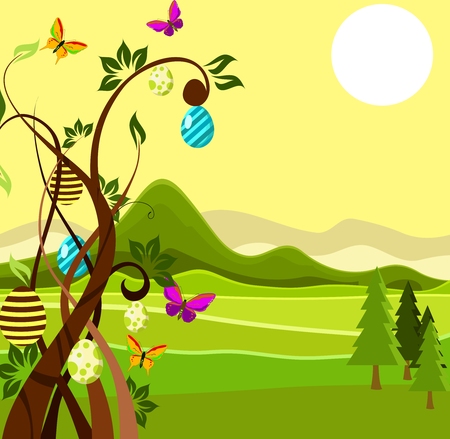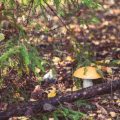Introduction to Foraging in Britain
Foraging for wild foods is a time-honoured tradition across Britain, weaving together centuries of rural wisdom, folklore, and a deep respect for the natural landscape. From hedgerow brambles to woodland mushrooms, the British countryside offers a remarkable array of edible treasures throughout the changing seasons. Beyond being a way to source fresh and flavoursome ingredients, foraging is also a celebration of local heritage and self-sufficiency—a practice that connects people with their environment in meaningful ways.
However, responsible foraging in Britain comes with important legal and ethical considerations. The 1968 Theft Act permits individuals to gather wild plants, fungi, fruits, and flowers for personal use only, not for commercial purposes. It’s crucial to avoid protected species and never uproot plants without landowner permission. Respecting nature reserves, adhering to the Countryside Code, and only taking what you need are essential principles every forager should uphold.
Culturally, wild foods have long held a special place on British tables—whether it’s sloes steeped in gin, nettles in springtime soups, or blackberries baked into autumn crumbles. Today, the resurgence of interest in seasonal eating and sustainable living has revived the ancient art of foraging. Whether you’re an urban dweller exploring city parks or a country rambler venturing down winding lanes, Britain’s wild larder awaits discovery—one season at a time.
Spring Foraging: Fresh Growth and Early Harvests
As the British countryside awakens from its winter slumber, spring foraging offers a bounty of fresh flavours and vibrant greens. The early months, from March through May, are prime time for gathering some of the most prized wild edibles. Whether you’re exploring ancient woodlands, hedgerows, or even your local park, here’s what to look out for and how to harvest responsibly.
Key Wild Edibles to Seek in British Springtime
| Wild Edible | Where to Find | Identification Tips | Best Harvest Time |
|---|---|---|---|
| Wild Garlic (Ramsons) | Damp woodlands, shaded riverbanks | Broad, glossy green leaves; strong garlic scent; white star-shaped flowers in late spring | March – May (before flowering for best flavour) |
| Nettles | Hedgerows, woodland edges, gardens | Serrated, heart-shaped leaves; stinging hairs on stems and leaves; wear gloves when picking | March – June (young tops are tastiest) |
| Cow Parsley | Lanesides, meadows, open woodland | Feathery leaves; delicate white umbrella-like flowers; be cautious—easily confused with toxic species like hemlock | April – June (young leaves and stems) |
| Early Blossoms (Elderflower) | Hedgerows, woodland edges, field margins | Creamy-white flower heads with a sweet scent; avoid red-stemmed lookalikes | Late May – June (flowers before berries form) |
Top Tips for Safe and Responsible Foraging
- Positive Identification: Always double-check wild plants before consuming. Use reputable field guides or join a local foraging group if you’re unsure.
- Harvest Responsibly: Only take what you need—leave plenty for wildlife and future growth. Never uproot entire plants.
- Avoid Polluted Areas: Steer clear of roadsides and places where chemicals may have been sprayed.
- Respect Protected Species: Familiarise yourself with Britain’s protected plants; some wildflowers are legally off-limits.
- Sustainable Picking: Pick young shoots or leaves rather than mature plants for better taste and plant health.
A Practical Note from the Field
I’ve found wild garlic to be an absolute game-changer in the kitchen—its punchy aroma instantly lifts homemade pestos or soups. Nettles, once blanched to remove their sting, make a brilliant substitute for spinach in everything from risottos to omelettes. Remember: always bring sturdy gloves and a basket or cloth bag for your finds. A little preparation goes a long way towards an enjoyable—and delicious—spring forage in Britain.

3. Summer Foraging: Bountiful Hedgerows and Meadows
When summer arrives in Britain, the countryside transforms into a forager’s paradise, with hedgerows and meadows teeming with seasonal treasures. Long daylight hours and warmer weather bring a surge of growth, making this the perfect time to explore nature’s larder. Among the most sought-after finds are elderflowers, wild strawberries, and gooseberries—each offering unique flavours and versatile uses.
Elderflowers: The Fragrant Favourite
Elderflowers are unmistakable in early summer, gracing hedgerows with their delicate white blooms and sweet, heady scent. Foraging these flowers is straightforward: look for fully opened umbels away from busy roads or sprayed fields. Snip them gently with scissors or secateurs to avoid damaging the plant. Elderflowers are brilliant for homemade cordials, sparkling drinks, or even as a floral addition to cakes and desserts. Just remember to use them fresh—they lose their aroma quickly once picked.
Wild Strawberries: Tiny but Mighty
Nothing quite matches the thrill of spotting wild strawberries nestled low in grassy verges or woodland edges. Although they’re much smaller than shop-bought varieties, wild strawberries pack an intense flavour punch. Take a shallow basket or container to avoid squashing these delicate fruits. They’re best enjoyed straight from the hand, scattered over yoghurt, or made into small-batch jams. Foragers often say that finding enough for a full jar is a labour of love—but well worth it!
Gooseberries: Tart Treats for Tarts
Gooseberry bushes often lurk in overgrown corners of gardens and old allotments, laden with green or blush-red berries by midsummer. Wear gloves when picking—they can be thorny customers! Gooseberries are famously tart raw but transform beautifully when cooked into crumbles, fools, or classic British jams. To gather them at their best, wait until the fruit feels plump and yields slightly under gentle pressure.
Practical Tips for Successful Summer Foraging
- Always seek permission before foraging on private land.
- Bring along sturdy containers (like punnet boxes) to keep your harvest in top nick.
- Only take what you’ll use—leave plenty behind for wildlife and other foragers.
Savouring Your Seasonal Finds
Whether you’re infusing elderflower cordial to enjoy on sunny afternoons, scattering wild strawberries on your breakfast porridge, or baking gooseberry crumble to share with friends, summer foraging brings both flavour and adventure to the British table. Embrace the abundance—and don’t forget to bring your wellies!
4. Autumn Foraging: Fruits, Nuts, and Fungi
Autumn in Britain is a true treasure trove for foragers, offering a cornucopia of wild fruits, nuts, and fungi. As the days grow shorter and cooler, hedgerows and woodlands burst with some of the most rewarding finds of the year. This season is especially beloved by both beginners and seasoned foragers because of its abundance and variety.
What to Pick in Autumn
From juicy blackberries dotting country lanes to earthy mushrooms nestled under fallen leaves, autumn offers something for every palate. Below is a handy table highlighting some of the top wild foods you can gather during this time:
| Wild Food | Where to Find | Best Foraging Period |
|---|---|---|
| Blackberries | Hedgerows, woodland edges | August – October |
| Chestnuts | Mature chestnut trees in parks and woods | October – November |
| Mushrooms (e.g., field mushrooms, chanterelles) | Meadows, woodlands, pasture edges | September – November |
| Sloes | Blackthorn bushes in hedgerows | October – November |
| Hazelnuts | Woodland paths, hedgerows | September – October |
Top Tips for Safe & Sustainable Autumn Foraging
- Mushroom Identification: Only pick mushrooms if you are 100% certain of their identity. Many edible varieties have toxic lookalikes—consider joining a local guided forage or using a reputable field guide.
- Leave Some Behind: Always leave plenty for wildlife and fellow foragers. Sustainable picking helps preserve these natural resources for future years.
- Avoid Polluted Areas: Steer clear of roadsides and industrial areas where plants may have absorbed toxins or pollutants.
The Joys of Autumn Foraging in Britain
The crisp air and changing colours make autumn an ideal time to explore Britain’s countryside with a basket in hand. Whether you’re baking blackberry crumble or roasting freshly gathered chestnuts over an open fire, these wild harvests bring a distinctly British flavour to your table—and create lasting memories outdoors.
5. Winter Foraging: Hardy Greens and Roots
As the British landscape settles into winter, many assume foraging comes to a halt. But even in the chill of December through February, nature still offers some resilient treasures if you know where to look. Foraging during winter is all about hardy greens and robust roots—perfect for those willing to brave the elements.
What’s Still Available in the Colder Months?
Despite the frost, you’ll find several wild edibles clinging on in hedgerows, woodlands, and even city parks. Rosehips are a seasonal staple: these bright red fruits of wild roses stand out against bare branches and can be harvested until early spring. Packed with vitamin C, they’re excellent for making syrups or adding tang to desserts.
Wood sorrel is another gem; its heart-shaped leaves are surprisingly tender despite the season and add a refreshing lemony zing to salads or sandwiches. Then there’s winter cress (also known as yellow rocket), a peppery green that thrives in damp fields and riverbanks when little else grows. The young leaves can be picked and tossed into soups or stews for a mustardy kick.
Realistic Advice for Winter Foraging
Foraging in winter requires a practical approach. Days are shorter, so plan outings carefully—midday is best for both light and warmth. Wrap up well: waterproof boots and layers are essential, especially as paths get muddy or icy.
Always carry a small basket or bag, but don’t expect bumper hauls; winter foraging is about quality over quantity. Learn to positively identify what you pick, as some plants look similar to toxic varieties when they’re not in flower. If in doubt, leave it out.
Remember, sustainable harvesting is key—never strip plants bare and always follow local guidelines. And finally, enjoy the process: there’s something invigorating about being out in crisp air, gathering ingredients that defy the cold. It’s a chance to slow down, observe nature’s subtle resilience, and bring a bit of wild flavour to your winter table.
6. Sustainable and Safe Foraging Tips
Forage Responsibly: Protecting Nature for Future Generations
Foraging in Britain is not only about enjoying the bounty of each season, but also about ensuring that wild spaces remain thriving and accessible for years to come. Stick to well-trodden public footpaths and designated rights of way—venturing off into sensitive habitats can disturb wildlife and damage delicate ecosystems. Always follow the Countryside Code: leave gates as you find them, avoid trampling crops or protected plants, and take all litter home with you.
Know Your Limits: Harvest Modestly
Take only what you need and leave plenty behind for wildlife and fellow foragers. A good rule of thumb is the “one in twenty” guideline—harvest no more than 5% of any patch or plant. Never uproot wildflowers or dig up roots unless you have explicit landowner permission, as many British species are legally protected.
Safety First: Identifying Edibles with Care
The British countryside boasts a wide variety of edible plants, mushrooms, and berries, but misidentification can be dangerous—or even fatal. Always double-check with a reputable guidebook or join local foraging groups before tasting anything new. If in doubt, leave it out. Wash all finds thoroughly to remove soil or contaminants, especially if foraging near roadsides or agricultural land.
Respect Private Land and Local Communities
Much of rural Britain is privately owned farmland or managed woodland. Always seek permission before foraging on private land, and respect signs indicating protected sites such as Sites of Special Scientific Interest (SSSIs) or nature reserves where picking may be prohibited. Engage politely with locals—many landowners appreciate being asked first and may even share their own tips on what’s in season!
Legal Considerations and Forager Etiquette
Certain wild foods are protected under UK law—including bluebells, wild garlic in some areas, and rare fungi species. Familiarise yourself with local byelaws to avoid fines or prosecution. Practise good etiquette by picking discreetly, avoiding over-harvesting, and leaving no trace of your visit.
Conclusion: Foraging as a Stewardship
Sustainable foraging isn’t just about filling your basket; it’s about fostering a deep respect for Britain’s rich landscapes. By following these practical safety guidelines and embracing countryside etiquette, you’ll help ensure that wild food traditions remain part of British culture for generations to come.


